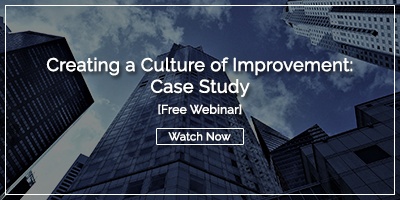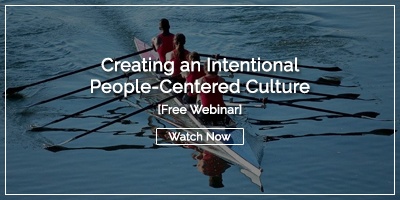 A dysfunctional workplace culture creates barriers to change, diversity, retention, and revenue growth. The most common signs include high employee turnover (46% cite culture as their reason for quitting), resistance to innovation, lack of diversity in leadership, and disengaged employees. Organizations can build healthier cultures by focusing on three core elements: high employee engagement, aligning individual strengths with job roles, and providing frequent learning opportunities.
A dysfunctional workplace culture creates barriers to change, diversity, retention, and revenue growth. The most common signs include high employee turnover (46% cite culture as their reason for quitting), resistance to innovation, lack of diversity in leadership, and disengaged employees. Organizations can build healthier cultures by focusing on three core elements: high employee engagement, aligning individual strengths with job roles, and providing frequent learning opportunities.
Why Does Workplace Culture Matter for Business Success?
Company culture serves five critical functions that directly impact your organization's performance:
- Creates organizational identity that distinguishes your company from competitors
- Builds employee commitment by fostering identity and emotional investment beyond self-interest
- Establishes behavioral standards that guide day-to-day decisions and actions
- Ensures social stability through shared assumptions and implicit rules
- Reduces ambiguity so employees understand priorities and expectations
In these ways, culture is beneficial to the organization as it enhances employee commitment and increases the consistency of behavior. In addition, culture is advantageous to the employee because it reduces ambiguity. Employees come to recognize how things are to be done and what is most important for the organization.
What Are the Warning Signs of a Dysfunctional Culture?
Every organization has a culture, whether it is intentional or not. However, when culture is allowed to grow without thoughtful attention, it can hinder its success.
Does Your Culture Block Innovation and Change?
Cultural predictability becomes a liability during times of change. Employees who cling to "the way we've always done things" create resistance that can prevent necessary evolution.
Warning signs include:
- Persistent resistance to new technologies or processes
- Inability to pivot when market conditions shift
- Loss of competitive advantage to more agile competitors
- Phrases like "that's not how we do things here" dominating conversations
Many established companies with strong legacy cultures failed to survive the transition to digital business because their cultural rigidity prevented adaptation.
Is your Culture Limiting Diversity?
A homogeneous culture restricts the range of candidates considered during hiring, favoring those with similar backgrounds, experiences, and values.
Warning signs include:
- Leadership teams that look remarkably similar demographically
- Promotion patterns that favor specific educational backgrounds or career paths
- Lack of challenging perspectives in strategic discussions
- Absence of original thinking in problem-solving approaches
This uniformity starves organizations of the diverse perspectives needed for innovation and creative problem-solving.
Are You Losing Your Best Talent?
High-performing employees have options. When they recognize that dysfunctional culture impedes their development and the organization's success, they leave.
Retention warning signs:
- High turnover among top performers and rising stars
- Exit interviews revealing cultural frustrations
- Difficulty attracting qualified candidates during recruitment
- Employees disengaging before they formally resign
Is Your Culture Creating Burnout Through Role Creep?
Talented employees often fall into the "role creep trap" where business necessities overtake personal talents. Like a group project where one student does all the work, star performers take on tasks outside their strengths just to prevent project failure.
Symptoms of role creep culture:
- High performers consistently working outside their areas of expertise
- Burnout and depression among your most capable employees
- Rewarding heroic firefighting rather than sustainable systems
- Employees spending more time avoiding mistakes than leveraging strengths
Barrier to Revenue
According to Gallup, organizations that can attract and retain top talent by creating and promoting a highly functional workplace culture can see a revenue advantage as big as 33%.
Building a Culture That Works
Research shows that the type of culture where excellent people can thrive has three key elements:
- High employee engagement
- Individuals in positions that align with their natural talents
- Frequent opportunities to learn and grow
What Creates an Engaging, High-Performance Culture?
There are three key components that make up an engaging, high-performance culture.
1. How Do You Build High Employee Engagement?
Engagement serves as the key performance indicator of culture health. Engaged employees bring their whole selves to work, actively seeking improvement opportunities.
True engagement drivers include:
- Managers who genuinely listen and provide support
- Regular, helpful feedback that enables personal development
- Meaningful recognition for outstanding contributions
- Psychological safety to take risks and innovate
What doesn't create engagement:
- Surface-level perks like free snacks or game rooms
- Mandatory fun activities
- Generic recognition programs
- One-size-fits-all benefits
High engagement connects directly to critical organizational health metrics: customer satisfaction, employee retention, safety records, productivity, and profitability.
2. Are Employees Working in Roles That Match Their Strengths?
Gallup reports that employees who focus on their natural talents and leverage their strengths are six times more likely to be engaged at work.
|
Strength-Based Culture |
Weakness-Focused Culture |
|
Focuses on leveraging natural talents |
Emphasizes fixing weaknesses |
|
Celebrates what people do well |
Relies on harsh performance reviews |
|
Assigns work aligned with abilities |
Creates role creep and misalignment |
|
Builds confidence and engagement |
Generates fear and avoidance behavior |
Creating strength alignment requires:
- Understanding individual talents through assessments and conversations
- Designing roles around people's natural capabilities
- Protecting high performers from mission creep
- Recognizing role misalignment as a systemic issue, not individual failure
3. Do Employees Have Opportunities to Learn and Grow?
Continuous development keeps talented people engaged and your organization competitive. Growth-oriented cultures provide:
- Regular skill-building opportunities
- Career pathways that leverage individual strengths
- Mentorship and coaching relationships
- Resources for professional development
- Challenges that stretch capabilities without breaking people
How Do You Build a Culture That Actually Works?
Start With Your Unique Mission and Values
Your culture should reflect your specific organizational vision. If innovation drives your mission, engagement and development should emphasize:
- Creative problem-solving processes
- Thoughtful risk-taking frameworks
- Learning from failures
- Cross-functional collaboration
- Rapid experimentation cycles
Generic culture initiatives fail because they ignore organizational uniqueness. Your culture should provide distinct, singular value that competitors cannot easily replicate.
Measure What Matters
Track culture health through meaningful metrics:
- Engagement scores across departments and teams
- Retention rates for high performers versus average performers
- Strength alignment between job requirements and employee capabilities
- Development participation in learning opportunities
- Innovation metrics like ideas submitted and implemented
Address Root Causes, Not Symptoms
Instead of adding perks to paper over cultural problems:
- Identify barriers to engagement, strength utilization, and growth
- Redesign systems that create dysfunction (performance reviews, promotion criteria, workload distribution)
- Train leaders to recognize and leverage employee strengths
- Create feedback loops that capture and address cultural concerns
- Model desired behaviors from leadership down
Foster Psychological Safety
Employees engage fully when they feel safe to:
- Ask questions without appearing incompetent
- Admit mistakes and learn from them
- Challenge ideas respectfully
- Take calculated risks
- Bring their authentic selves to work
Frequently Asked Questions About Workplace Culture
Q: Can you change culture without changing leadership?
A: While possible, it's extremely difficult. Leaders model cultural norms through their decisions and behaviors. If leadership doesn't embody desired changes, employees won't believe the transformation is genuine.
Q: What's the first step in improving workplace culture?
A: Start by listening. Conduct anonymous surveys, hold focus groups, and review exit interview data to understand what employees actually experience. You can't fix problems you don't accurately diagnose.
Q: How do you measure culture change progress?
A: Use a combination of quantitative metrics (engagement scores, retention rates, promotion diversity) and qualitative feedback (employee stories, behavioral observations, sentiment analysis). Track trends over time rather than expecting overnight transformation.
Q: Should small companies worry about culture as much as large enterprises?
A: Absolutely. Culture forms from day one, whether intentional or not. Small companies have an advantage—it's easier to establish healthy norms early than to change entrenched dysfunctional patterns later.
Q: What role does continuous improvement play in culture building?
A: Continuous improvement methodology provides the systematic framework for culture change. Tools like improvement management software help organizations identify cultural barriers, track engagement initiatives, and measure progress over time. When improvement becomes part of daily work, culture evolution becomes sustainable rather than a one-time initiative.




Add a Comment